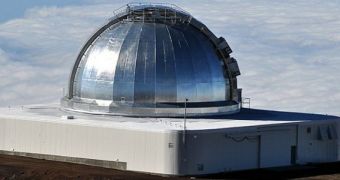Astronomers say that the dwarf planet Ceres, which lies in the Inner Asteroid Belt, between the orbits of Mars and Jupiter, may feature ice buried beneath its surface. This conclusion is based on data collected by the SpeX instrument on the NASA Infrared Telescope Facility (IRTF), which is located atop Mauna Kea, in Hawaii.
These observations revealed signs of brucite, hydroxyls, and carbonate minerals, which scientists say can only form in the presence of relatively large amounts of water. But telescopes were thus far unable to observe any ice or water on the surface of the dwarf planet, Astrobiology Magazine reports.
Expert Andy Rivkin, from the Johns Hopkins University Applied Physics Laboratory, says that Ceres is too warm to support surface ice, but adds that the material may be found in abundance beneath the tiny world's surface. The question then becomes whether or not this ice can support life.
This question, and more, will hopefully be answered starting February 2015, when the NASA Dawn mission finally enters orbit around Ceres. The spacecraft has already provided a host of information about the solar system's largest asteroid, Vesta, and experts expect it to do the same for the dwarf planet.

 14 DAY TRIAL //
14 DAY TRIAL //